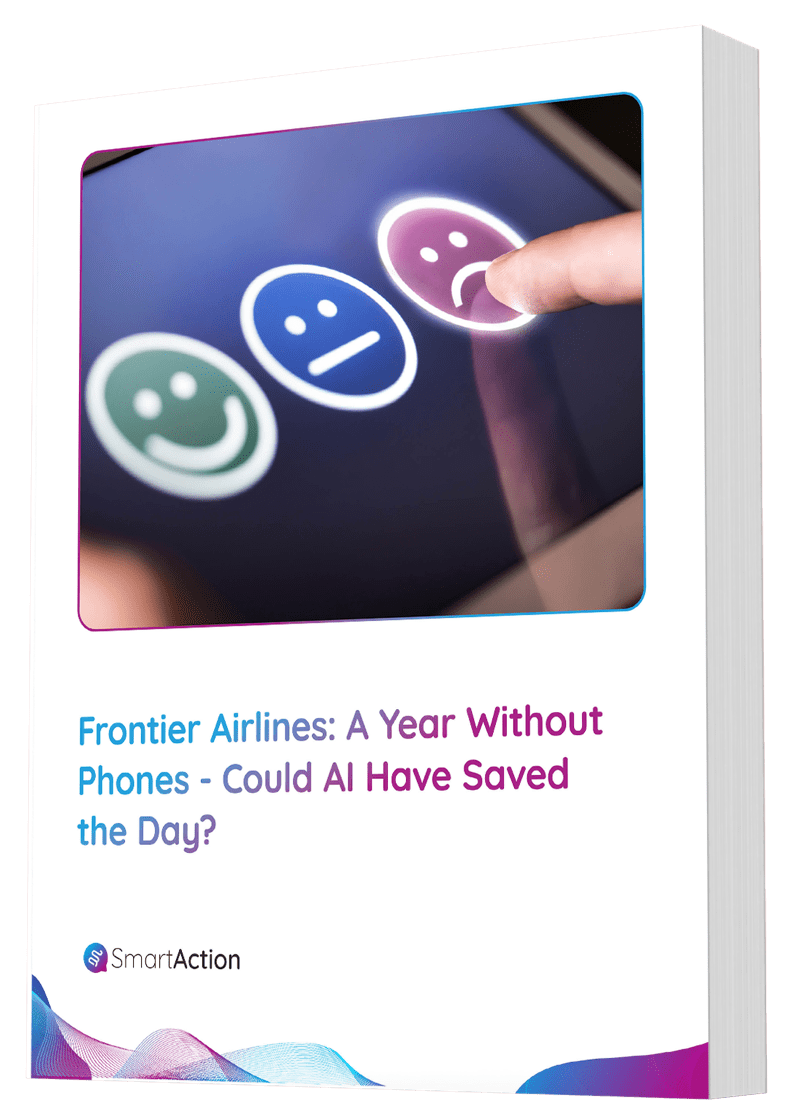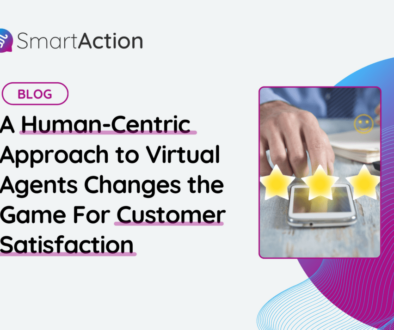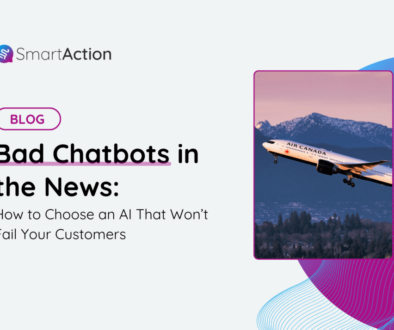AI Isn’t Coming…It’s Here
Since joining the SmartAction team, I have come to notice just how much artificial intelligence is woven into our everyday lives. My 13-year-old son likes to brag to his nerdy gamer friends that I work for an artificial intelligence company, which seems to impress them and elevate my status as a “cool mom.” Being a cool mom has its perks, but what I’m more proud of are the conversations with my son and his friends that tend to follow. Most times, after the braggadocious comment, I ask the boys what artificial intelligence means to them, and their responses are impressive.
“Well, it’s technology, but it’s so real that it makes you think,” says one friend.
“It feels realistic, like you’re talking to a human, but you know it isn’t a human,” mentions another.
“It has to have inflection and some human-like sound to the voice,” says my son.
These answers astounded me for two reasons: one, my son used the word inflection (!), and two, the boys had a very developed and specific understanding of what artificial intelligence really was.
Though artificial intelligence has been a buzz word for a long time, in popular culture it has long represented robots that either try to take over the world (Skynet) or fix a spacecraft (R2D2). More often than not, this is where the general public, especially kids, were getting their knowledge about the topic. But these days, AI has become a daily influence, and for my son and his friends, video games are the source of their understanding. They are just a few of the more than 40 million kids in America that play video games on a regular basis (Entertainment Software Association 2015). Video games have become somewhat of a national pastime, in that kids under 18 barely represent one-quarter of the total gaming population in the US. “Nerdy gamer” doesn’t even have a negative connotation.
But widespread gaming seems to make sense when you consider how fantastic technology has become. Nearly all video games these days leverage AI, making them more intuitive, realistic, and dynamic than they have ever been. But more importantly, this means that young video game players interact with AI almost every day, and, depending on outcomes within a game, formulate relatively deep knowledge about how it works and informed opinions about how it should work. Obviously, they aren’t developing technical understanding about it, but they are certainly concerned with functionality, how far it is able to extend, ease of interaction, and how it aids/restricts them in accomplishing goals. All of these are characteristics that AI developers are certainly considering, as well. And for a 13-year-old to be able to consciously articulate functionality of artificial intelligence is pretty cool and a true sign of the times.
What sparked me to write all of this down? Well, the gaming population is huge and video games help people to recognize AI in their lives. But even if they aren’t gamers, there are hundreds of millions of others that have had similar experiences with AI and, unlike my son, are adult consumers – potential customers. I couldn’t help but notice some parallels between gamers and customers when it comes to technology. These traits reside in both gamers and everyday customers, and companies should consider them when developing a strategy for technology implementation.
- Familiarity: People are familiar with interacting with AI technology. Video games are predicated on human-technology interaction, so any gamer will be used to utilizing it to accomplish goals. But living in the general world today requires familiarity with technology, so gamers aren’t the only ones who know how to interact with it.
- Comfort: In addition to familiarity, many people, are comfortable using it. AI technology isn’t patronizing (i.e. it doesn’t treat you like an idiot) and it is widespread. In many cases, people prefer to help themselves rather than have to talk to another person about it, even if it means interacting with technology of some sort.
- Everyone’s a critic: The first two lead to the third: a more critical eye. So the technology that is being offered has to be up to par! Really poor functionality is usually obvious, but what separates consumers today is their ability to nitpick specific downfalls of a decent technology and use those nitpicks to formulate broad opinions about it. Broad, negative opinions don’t bode well for companies.
To be clear, gaming culture and experiences do not represent the culture and experiences of the general population – not even close. But the widespread and growing recognition of artificial intelligence technology in the world is correlated to how broadly video games are played. Cutting edge technology is becoming the expectation, especially for the generation of kids under 18. Just ask my son.
For more info about how SmartAction leverages artificial intelligence, watch our video!
About the Author:
Jenn Wiles, VP of Customer Experience & Innovation
Jenn’s motto is simple – connect, reach, grow – and her goal is to keep clients competitive and thriving. She has 20 years’ experience in SaaS and voice automation.






